Outdoor Girl
Continued onto: Outdoor Girl (post 1935)
Outdoor Girl first appeared in the American market in 1928 but if we are to trace its development we need to look at its originator, Myram Picker, and the earlier development of the Crystal Chemical Company which went on to manufacture the Outdoor Girl range.
Myram Picker
Myram Picker lists his birth date as 1879 on his naturalisation application but other evidence suggests that he was born in 1881 in Minsk, Russia but moved to the United States in 1900. There he joined other members of his extended family who had also fled the antisemitism endemic in the Russian state. He passed the New York Board of Pharmacy exams in 1903, married Edna Krystal [1880-1965] in 1904, and together they produced four children – Harriet Lee Picker [b.1905], Rhoda (Ray) Picker [b.1908], Alice Jean Picker [b.1910] and Stanley Herbert Picker [b.1913].
In 1912, we find Myram Picker running his own drug store at 486 East 138th Street in the Bronx. Deciding to move from retail into manufacturing proprietary medicines be became a foundation member of the Crystal Chemical Company (capital US$100,000) organised in 1912 to make medicinals for the medical and dental professions. Myram Picker was the company druggist and took the position of secretary and general manager before being made president in 1931.
Crystal Chemical Company
Crystal Chemical initially operated at Myram Picker’s drug store at 486 East 138th Street manufacturing just three items but soon needed additional space. It had moved to 406 East 149th Street by 1914, then was found at 535 Bergen Avenue in 1916, 767-775 Jackson Avenue in 1917, and 861 Westchester Avenue in 1918. During this time the company also underwent a series of recapitalisations rising to US$200,000 in 1917, and US$500,000 in 1918, before reaching US$2.5 million in 1920.
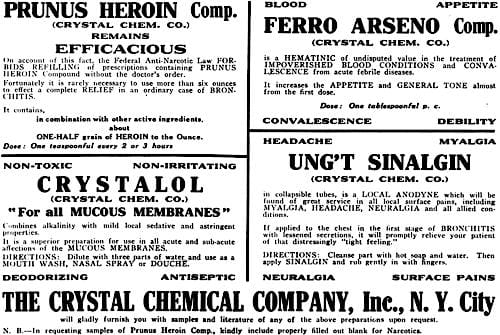
Above: 1916 Medicinals sold by Crystal Chemical.
In 1919, Crystal Chemical purchased a building at 130 Willis Avenue on the corner of 134th Street and this became the company’s main address from 1920 after it spent US$10,000 on alterations and improvements. Some manufacturing continued at its Westchester Avenue factory for some time and Crystal Chemical also spent an additional US$26,000 upgrading its facilities there.
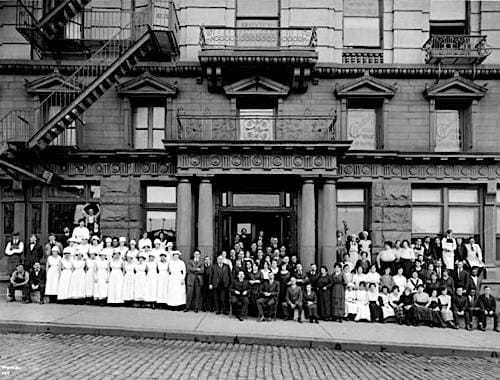
Above: 1919 Staff photograph taken in front of Crystal Chemical at 130 Willis Avenue (Museum of the City of New York). The building was initially erected as a hotel and still stands today.
The six-story building on Willis Avenue was organised as follows. The ground floor was taken up with executive offices, a display room and the receiving and shipping departments.
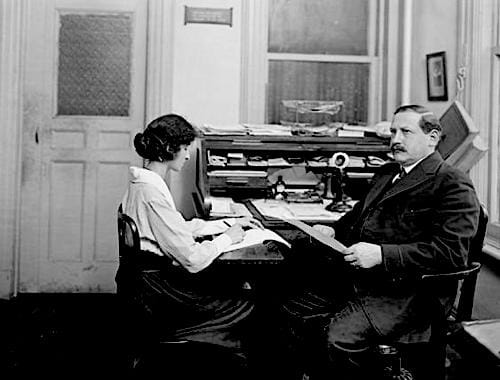
Above: 1919 Myram Picker in his office dictating to his secretary (Museum of the City of New York).
The second floor held a large stock room, as well as the packing, purchasing, advertising and detail departments. The third floor was primarily take up with the finishing (labelling and wrapping) department.
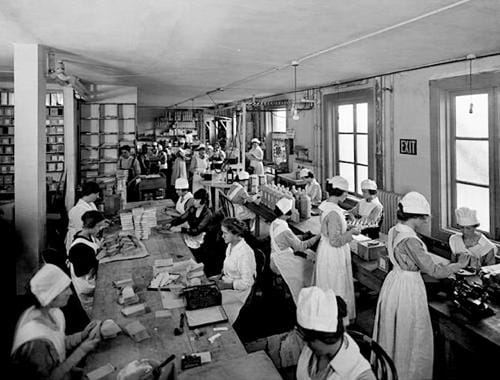
Above: 1919 Finishing department at Crystal Chemical (Museum of the City of New York).
The fourth floor was devoted to tablet making and coating, the analytical and research laboratories as well as the making and assembling of face powder and rouge boxes.
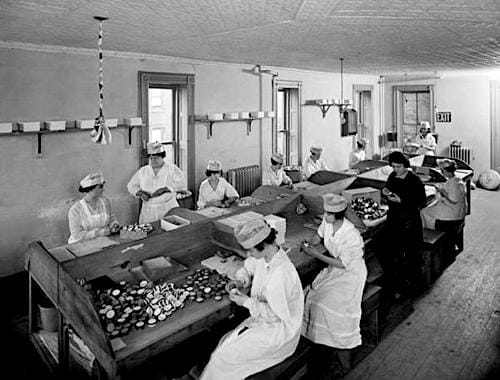
Above: 1919 Making face powder and rouge boxes at Crystal Chemical (Museum of the City of New York).
Cosmetics along with other products were produced on the fifth floor.
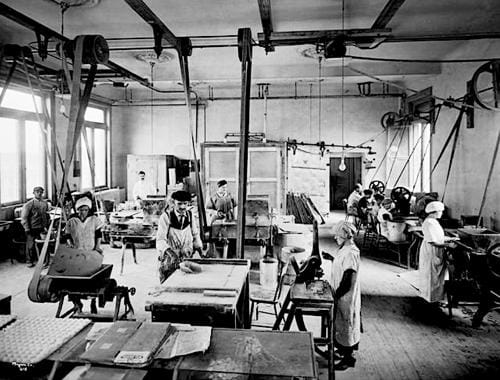
Above: 1919 Workers making face powder and other products at Crystal Chemical (Museum of the City of New York).
Crystal Chemicals decision to add cosmetics to its medical and dental lines saw it established a new cosmetic subsidiary, Trece Laboratories, in 1919, and buy Gournay Laboratories, a New York cosmetic company founded in 1918.
Trece Laboratories was also based at 130 Willis Avenue with Myram Picker as its secretary-general manager. It manufactured a wide range of private label cosmetics for companies such as the Baldwin Perfumery Company, National Toilet Company, Behrens Drug Company, and Marinello branded according to their requirements.

Above: 1922 Private label cosmetics made by Trece Laboratories.
In addition to the private label business Crystal Chemical also produced cosmetics under its own brands, most notably its La Fleurette range introduced in 1919.
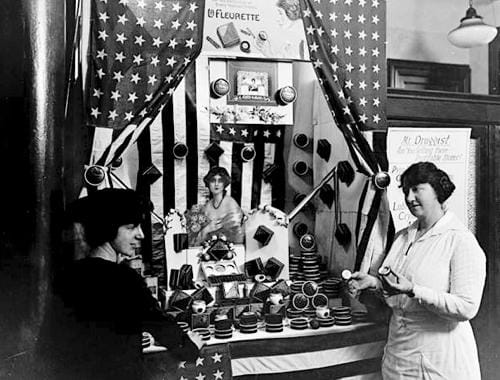
Above: 1919 Display of La Fleurette cosmetics produced by Crystal Chemical (Museum of the City of New York).
The new cosmetic businesses proved to be very lucrative and its profits enabled Crystal Chemical to heavily advertise Z.B.T. Baby Talcum, a product it had developed in 1924. Advertising enabled Z.B.T. to become became one of the leaders in its field and its success seems to have triggered a change of direction at Crystal Chemical – a move away from concentrating on sales volumes towards focusing on products that produced the most profits.
On the pharmaceutical side, Crystal Chemical stopped producing most of the hundreds of items it currently produced in preference to making and selling a few of its most profitable lines, including Z.B.T. Convinced that there was unlikely to be any substantial growth of its private label cosmetics business it also reduced the activities of Trece Laboratories and redirect its efforts towards making and selling its own brand (Picker, 1932, p. 280). However, rather than promoting La Fleurette, the company started afresh with a new line, Outdoor Girl.
Outdoor Girl
Unlike the pseudo-French brand La Fleurette, Outdoor Girl was marketed as definitively American. The name was selected to appeal to young American girls, often referred to as ‘flappers’, most of whom engaged in some sort of outdoor activity. Consequently, early advertising for Outdoor Girl featured women engaging in sports such as flying, swimming, playing golf, and horse riding and these were also used to decorate Outdoor Girl’s brightly coloured packaging.
Products
Outdoor Girl began with two products, a face powder and compact rouge, both containing olive oil. Crystal Chemical made a number of beneficial claims for the olive oil but its primary benefit was in helping the powders to cling to the skin. The formulation was covered by a patent (US patent no. 1,707,684, 1929) developed by Myram Picker’s nephew Sidney Picker [1894-1962], who had come to work for Crystal Chemical. A similar idea had been previously used to make fettpuders and, closer to home, for the highly successful Armand Cold Cream Powder developed by Carl Weeks [1876-1962] in 1918.
Outdoor Girl (Olive Oil) Face Powder: “A face powder made with a base of purest olive oil! . . . You’ve never heard of that before. A powder that not only is fluffy dry and caressing in its texture but actually clings longer than any you have used.” Shades: Lido, Boulevard, Flesh, Rachelle, Naturelle, White, and Deep Rachelle with Everglades added in 1931.
Outdoor Girl Dry Rouge: “Delicately accentuates the natural magnetic glow of perfect physical health. Only superfine ingredients are used, together with pure Olive Oil, scientifically blended and compressed by a special secret process, and guaranteed to be free from any deleterious substances.” Shades: Lido, Scarlet, Brilliant, Cherry, Raspberry, Medium, and Orange.
See also: Fettpuders (Fat Powders) and Armand
Although it had a novel formulation, the American cosmetic market was highly competitive and Crystal Chemical had to work hard to get stores to stock the new lines. It offered to exchange the Outdoor Girl lines with Z.B.T. Baby Talcum if they didn’t sell (Picker, 1932, p. 280) and also hired the United Advertising Agency, New York to run an extensive newspaper advertising campaign. These advertisements also capitalised on the standing Crystal Chemical had built up for Z.B.T. Baby Talcum by noting that Outdoor Girl was produced by the makers of Z.B.T. A similar message was also included on early Outdoor Girl packaging.
Crystal Chemical’s efforts in promoting Outdoor Girl were very successful. By 1929, it was being distributed across more than 80 American cities and Outdoor Girl Cheek and Lip Rouge, Lipstick, and Olive Oil Cream had been added to the range, each product also formulated with olive oil.
Outdoor Girl Lipstick: “Indelible and waterproof, this exquisite lipstick spreads smoothly and imparts to the lips a thrilling, natural glow.” Shades: Lido, Orange, Boulevard, and Naturelle with Everglades, and Miami added later.
Outdoor Girl Lip and Cheek Rouge: “[D]oes away with the cheap artificial effect that so often results when different shades of rouge and lipstick are used. A mere touch, applied to lips and cheeks, reproduces the beautiful, natural tints of a healthy, glowing skin.” Four shades.
Outdoor Girl Olive Oil Cream: “[A] rich, nourishing cream made on a base of pure olive oil. Cleanses, smooths and beautifies. Excellent for dry skin.”
The range was expanded again in 1930 with Outdoor Girl Lightex Face Powder for oily skin types, Liquefying Cleansing Cream, Cold Cream, and Vanishing Cream also introduced along with a number of nail cosmetics including Outdoor Girl Nail Gloss and Remover.
Outdoor Girl Lightex Face Powder: “This airy powder is so exquisitely light, it blends softly with the skin, imparting a younger, lovelier charm. Its unusual base, fifteen per cent lighter than that used in any other powder, gives it an unbelievable fluffiness which veils the oiliest skin in soft fairness.” Shades: Lido, Boulevard, Flesh, Rachelle, Naturelle, White, Deep Rachelle, with Everglades added in 1931.
Outdoor Girl Liquifying Cleansing Cream: “Light, penetrating, sinks gently into the pores ridding them of all impurities, dirt and old make-up. Especially good for the skin with a slight tendency to dryness.”
Outdoor Girl Cold Cream: “A rich, soft, nourishing cream for cleansing and lubricating. Penetrates into the pores to cleanse away embedded dirt and impurities. Apply liberally over face and neck, and wipe away gently with a soft cloth. After cleansing at night, massage some more cream into the skin to nourish the tissues while you sleep.”
Outdoor Girl Vanishing Cream: “A fluffy, air-textured non-greasy cream which disappears into the skin to form a matt, velvety clinging base for make-up and powder. Gives protection against chapping of the face and hands. Smooth evenly over the skin after cleansing, then pat on face powder.”
The stock market crash of 1929 and the subsequent economic downturn saw the retail demand for Outdoor Girl drop and the company cut back on its advertising. However, after the initial shock, sales of Outdoor Girl cosmetics resumed their steady growth as Crystal Chemical adjusted to the economic depression. It negotiated discounts for retailers, intensified its advertising and extended it to magazines, and introduced a wide range of 10-cent sizes and combination packages for many Outdoor Girl products which made them more appealing to cost-sensitive customers. The 10-cent sizes, which acted like trial samples, did particularly well in cut-price chain stores like F. W. Woolworth.

Above: 1932 Comparison of Outdoor Girl sales volumes with advertising expenditure (Picker, 1932, p. 308).
The company also responded to problems it picked up through its customer surveys. It introduced Lightex Face Powder when women reported that they thought the Olive Oil Face Powder would not be suitable for oily skin types, and introduced a winter campaign which featured ‘indoor’ women getting an ‘outdoor’ complexion when surveys suggested that women considered Outdoor Girl as a summer range (Picker, 1932, p. 280).
Crystal Chemical also continued to add to the Outdoor Girl range which had expanded to 34 items by 1932. New products included Outdoor Girl Skin Freshener, Hand Lotion, Talcum Powder, Eye Shadow, Cosmetique (mascara), Eyebrow Pencil and three perfumes. The company also developed a rudimentary treatment plan.
At night, you need spend only two minutes removing the dirt and make-up from your pores with the Outdoor Girl liquefying cleansing cream. This is a penetrating cream which melts into a silvery fluid the moment it touches your skin. It does the job of cleaning far better than any soap or water. After using this apply a thin veil of the soothing olive oil cream to nourish and tone up your skin while you sleep.
Daytime beauty care requires but three minutes. First, enliven your skin with Outdoor Girl skin freshener. Next use the vanishing cream to protect the complexion and as powder base. Now for make-up! Lipstick or lip-and-cheek rouge for your lips and a touch of dry rouge to your cheeks. Then dust on your favorite shade of Outdoor Girl face powder and you are ready to face the world.(Outdoor Girl advertorial, 1935)
During this time Crystal Chemical had been selling Outdoor Girl in Canada establishing Crystal Products Co. Ltd. there in 1932, the same year that the American company incorporated. It is worth noting that this new company was called Crystal Products rather than Crystal Chemical. This reflects the change from being a general chemical supplier to a manufacturer of its own product lines.
Outdoor Girl’s first move overseas occurred with the founding of the Crystal Products Co. Ltd. in Britain in 1931 and the establishment of a factory there in 1932. The factory served the British and European markets as well as countries like Australia and New Zealand that had once been part of the British Empire. Additional factories were also founded in Montreal, Canada and Havana, Cuba, with Outdoor Girl cosmetics becoming available in 22 countries around the world by 1933.

Above: 1934 Trade advertisment for Outdoor Girl (UK).
In 1934, Crystal Chemical commissioned the United Advertising Agency to repackage the entire Outdoor Girl range. The brightly coloured packaging of earlier years was replaced with more subdued colours of orchid, magenta and silver with bottles topped with magenta-coloured Durez caps. Personally, I think these new containers were less attractive but perhaps they more closely matched the more sober economic conditions of the 1930s.
Sale
In 1935 the American Outdoor Girl range and trademarks were sold to Affiliated Sales, Inc., a company that was formed from the amalgamation of the Edna Wallace Hopper, Neet, Kissproof, and Louis Philippe cosmetic ranges.
See also: Edna Wallace Hopper
Outdoor Girl was already declining when Affiliated Products was sold to American Home Products in 1936 and the new owners did little to arrest its decline. Outdoor Girl largely disappeared from the United States during the Second World War and was discontinued in 1945. However, the British version of Outdoor Girl continued to prosper and it is there that we will take up the next part of the story.
Timeline
| 1912 | Crystal Chemical Company established. |
| 1919 | Trece Laboratories founded. Gournay Laboratories acquired. New Products: La Fleurette range. |
| 1928 | New Products: Outdoor Girl Face Powder; and Outdoor Girl Rouge. |
| 1929 | New Products: Outdoor Girl Lipstick; and Outdoor Girl Face Cream. |
| 1930 | New Products: Outdoor Girl Olive Oil Cream; Outdoor Girl Cold Cream; Outdoor Girl Vanishing Cream; Outdoor Girl Liquifying Cleansing Cream; Outdoor Girl Lightex Face Powder; Outdoor Girl Nail Gloss; Outdoor Girl Remover; and Outdoor Girl Cosmetique. |
| 1931 | Crystal Products Co. Ltd. founded in London. Outdoor Girl range repackaged. |
| 1932 | Crystal Chemical Company incorporates. Crystal Products Co. Ltd. (Canada) established. Crystal Products (UK) opens a factory in London. Outdoor Girl Dawn, Noon, and Night Perfumes. |
| 1934 | Outdoor Girl range repackaged. |
| 1935 | Outdoor Girl (USA) sold to Affiliated Products, Inc. |
| 1936 | Affiliated Products bought by American Home Products. |
Continued onto: Outdoor Girl (post 1935)
First Posted: 6th June 2024
Sources
The American perfumer & essential oil review. (1906-1955). New York: Robbins Perfumer Co. [etc.]
The chemist and druggist. (1859-) London: Morgan Brothers.
The drug and cosmetic industry. (1932-1997). New York: Harcourt Brace Jovanovich [etc.].
Picker, M. (1932). 400% increase in sales during the depression. Sales Management, 30(8), 279-281, 308.
Showing indoor girls how they can have outdoor complexions. (1932). Printers Ink, 47(13), 70-72.
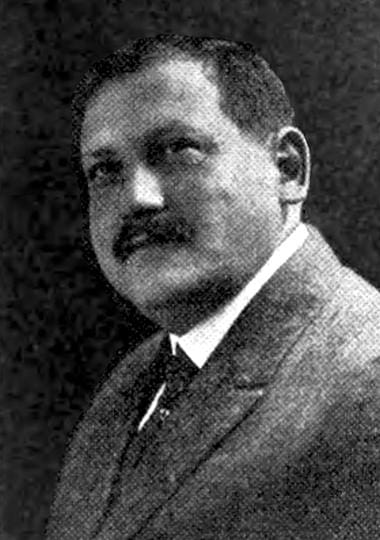
Myram Picker [1881-1950].
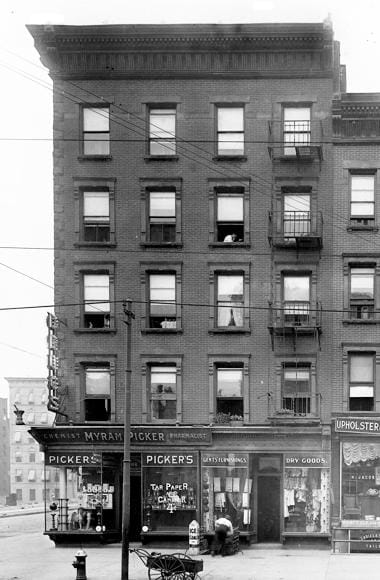
1913 Myram Picker’s Drug Store on the corner of East 138th Street and Brown Place in the Bronx.
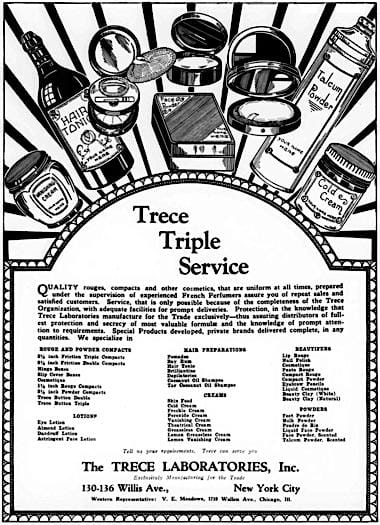
1923 Trade advertisement for Trece Triple Service.

1923 Trade advertisement for La Fleurette.
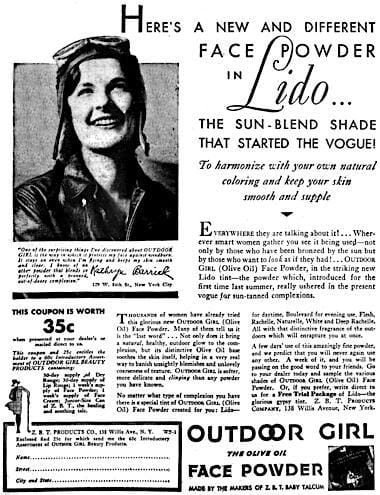
1929 Outdoor Girl Olive Oil Face Powder.
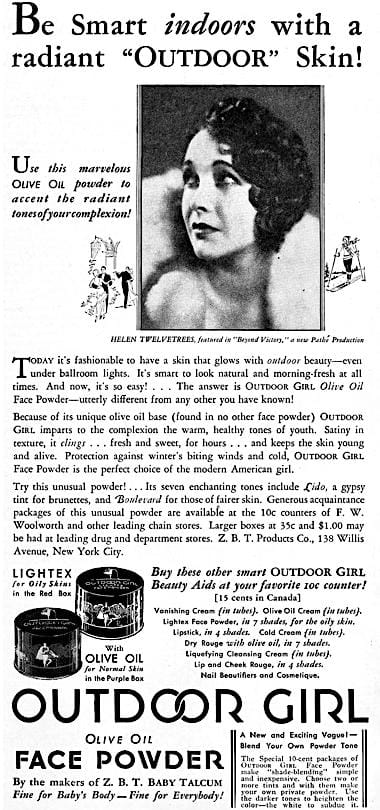
1930 Outdoor Girl Lightex and Olive Oil Face Powders.
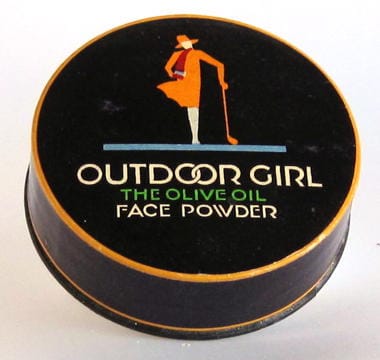
Outdoor Girl Olive Oil Face Powder.
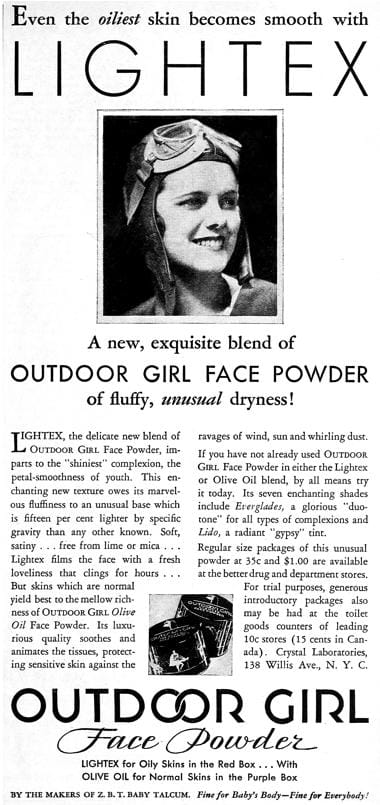
1931 Outdoor Girl Lightex Face Powder.
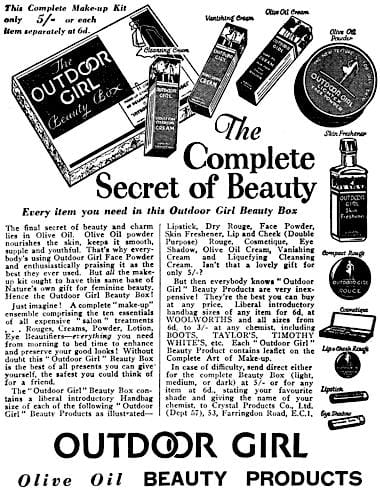
1931 Outdoor Girl (UK).
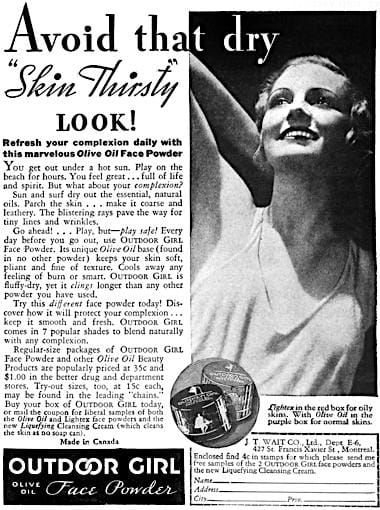
1932 Outdoor Girl Face Powders (Canada).
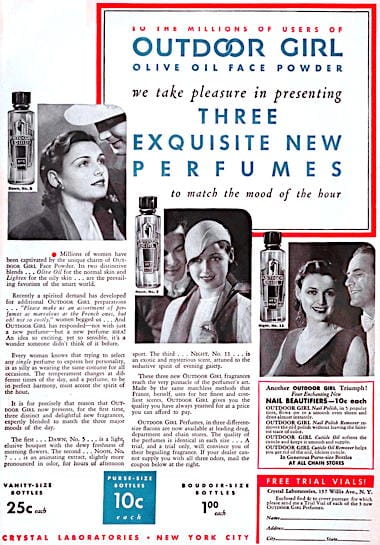
1932 Outdoor Girl Perfumes.
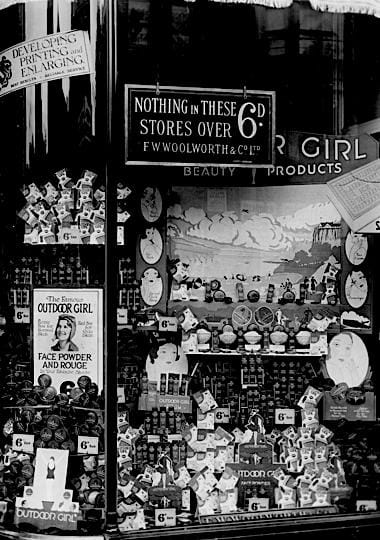
c.1932 F. W. Woolworth summer window display for Outdoor Girl (UK).

1933 Outdoor Girl (Australia).
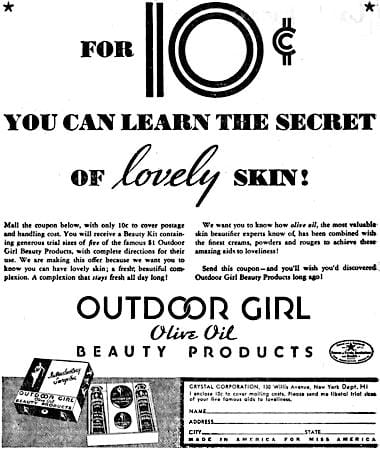
1933 Outdoor Girl trial sizes.
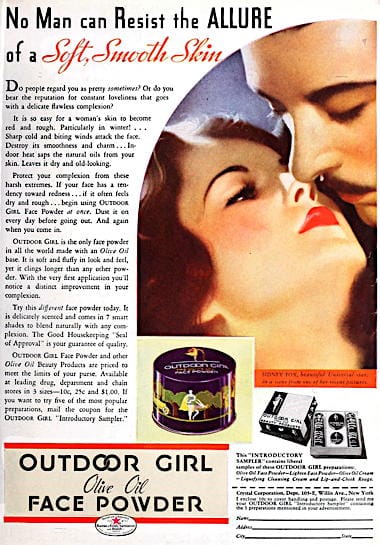
1933 Outdoor Girl Face Powder.
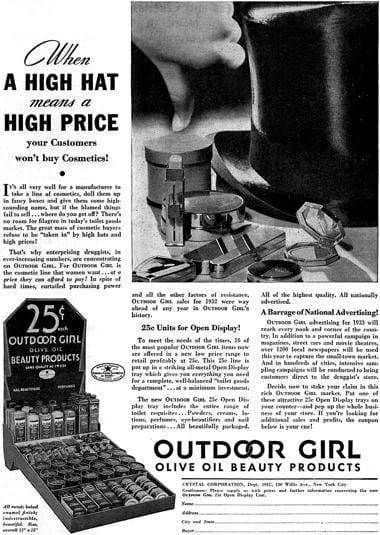
1933 Trade advertisment for Outdoor Girl.

1934 Outdoor Girl (Latin America).
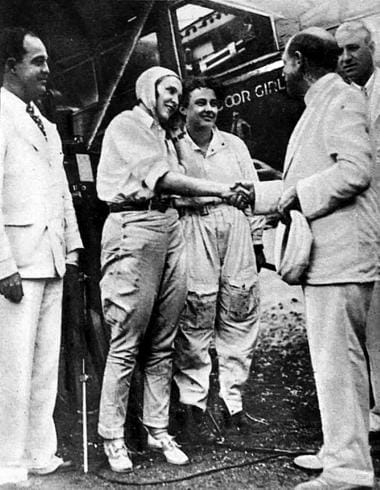
1934 Myram Picker congratulating Frances Marsalis [1900-1934] and Helen Richey [1909-1947] on breaking the women’s endurance flight record. The plane they flew was named ‘Outdoor Girl’ after the corporation sponsored the flight.
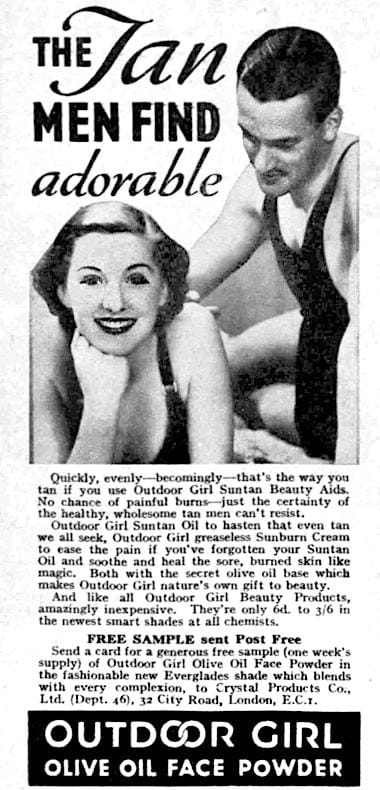
1934 Outdoor Girl Suntan Oil, Sunburn Cream, and Olive Oil Face Powder (UK).
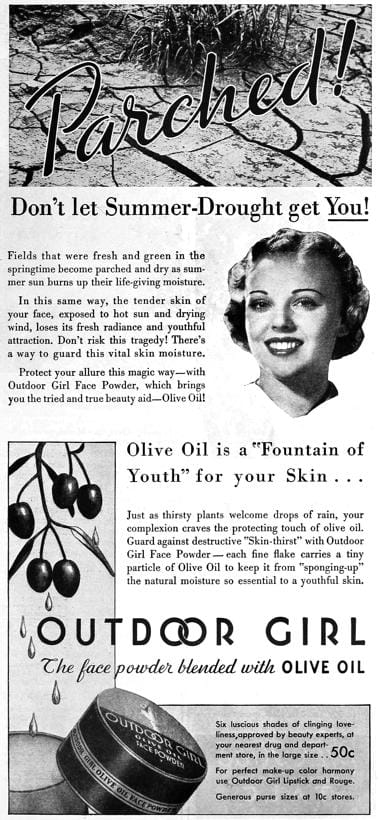
1937 Outdoor Girl now owned by American Home Products.
